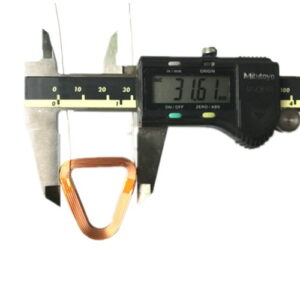The insulation material, lead wires, and coils of motor linear motor coils should be selected based on the motor’s heat resistance. The thickness of motor linear motor coils is determined by the motor itself. Due to the forming process, the design thickness should be greater than 0.5mm, and the iron core and coils are insulated with plastic resin. The coil frame material is usually nylon “66” or PBT. The coils are made from polyurethane wire or polyester wire, depending on the insulation class required. The insulation class for permanent magnet stepper motors is generally below Class A (105 degrees Celsius). Different manufacturers may have different methods of lead wire installation. A common method is to fix the lead wire joint to the frame through potting.

In order to achieve mechanical winding of motor linear motor coils, the insulation structure has also been improved. The thickness of the stator core of motor linear motor coils is half of the motor thickness. Skirt insulation material is inserted into the slots, and the side surfaces of the slots are completely covered with resin. The winding machine mechanically winds the wire using a shuttle. One end of the coil is fixed to a terminal post, and the other end is led out from the lead wire outlet after being connected. With this method, the stator and lead wires of the motor can be produced separately, facilitating component standardization. Motor linear motor coils use Class E (120 degrees Celsius) insulation, but Class B or Class F insulation materials can be selected according to specific requirements.
Motor linear motor coils use flat copper wire and copper tape. High heat-resistant materials are used for insulation to increase the allowable temperature rise and reduce the coil volume. Double-layer and triple-layer insulated wires can reduce the size of the coil.
The conductors of motor linear motor coils are made of copper, silver, or gold thin films, formed into comb-shaped, spiral, or meandering patterns. The insulation materials used are Class H or Class C materials. There are also multi-layer structures, combinations of multiple multi-layer coils, or overlapping of multiple coils and magnetic cores.
